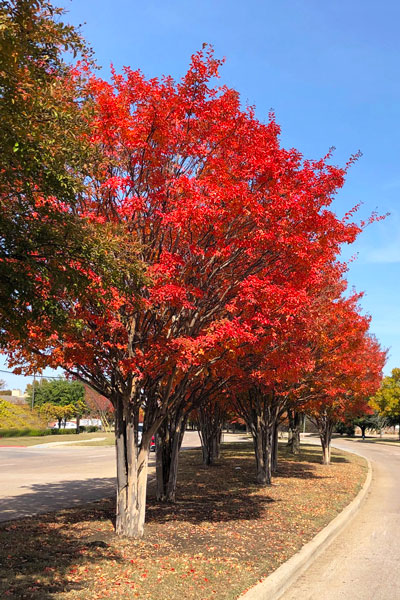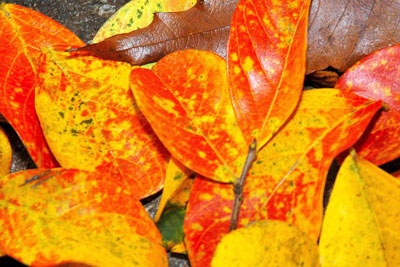Flashback of Fall Foliage

My iPhone has a habit of showing me photos I’ve taken “On this date.” They’re usually set to music, and they’re often shared back as a means of reminding me how much my grandkids have changed over the past several years. (Two of those grandkids are in college and one more will by this time next year. One is already a dad. Oh, my.)
This photo popped up two days ago – on Tuesday. This is how crape myrtles looked along Eldorado Parkway east of US75 in McKinney that week of 2019. I had just driven out of the car wash – this is one of those photos that so captured my soul that I remember the exact details of the time when I took it.
How does this come about?
Fall color happens as the green chlorophyll pigment dissipates and becomes replaced by the pigment known as anthocyanin. That pigment is produced under certain specific conditions (warm days, cool nights without frost and high levels of sugars in the leaves).
Yellow, orange and brown shades are the result of carotenoid pigments. Unlike anthocyanins, carotenoids are present all season long. They just don’t become noticeable until the chlorophyll disappears with cool weather.

Our weather conditions here in Texas, in case you hadn’t noticed, vary a lot from year to year (or hour to hour). As a result, the intensities of fall colors will also vary. Unless something changes in a hurry, this year is not looking like it’s going to be stellar for fall foliage. That’s partly because of fall weather conditions, but it also has to be the result of damage done by the cold of last February.
But in any event, I wanted to share this photo that Apple and my iPhone loaned back to me this week. You can see why I consider crape myrtles to be truly “plants for all seasons.”
Note: Want to see official details of why leaves change colors in fall? Here’s the word from the U.S.D.A. Forest Service. There couldn’t be a more credible source. https://www.fs.usda.gov/visit/fall-colors/science-of-fall-colors
